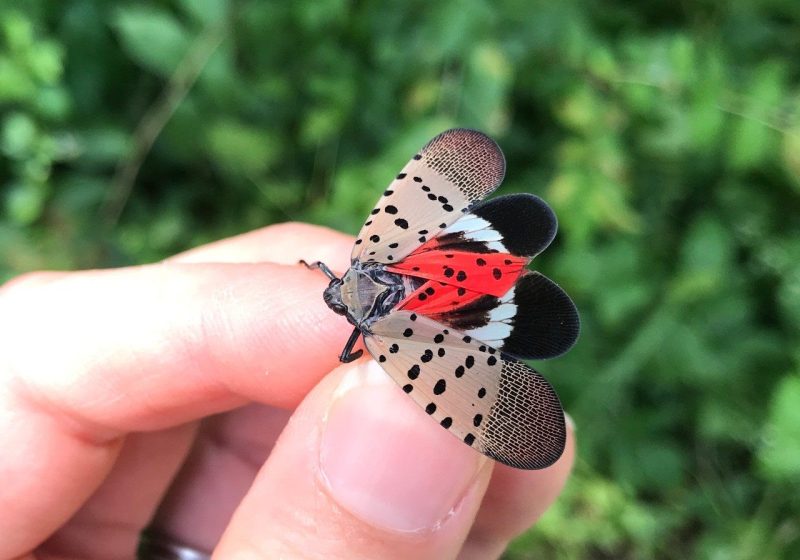
The spotted lanternfly will emerge from its egg stage in mid- to late April to feed on a wide range of fruit, ornamental and woody trees, and vines.
The battle to beat the bug is back. Spotted lanternflies, which have overwintered in egg masses, are about to hatch and make their reappearance as nymphs in mid- to late April, said Virginia Tech entomologist Eric Day.
The spotted lanternfly is well-established up and down the East Coast and in Virginia,” said Day, who manages the Insect Identification Lab in the College of Agriculture and Life Sciences’ Department of Entomology. “It’s really a perfect invasive storm. We are moving from detecting and reporting it to managing it and reaching out to those who are potentially impacted.”
As Virginia prepares to receive its unwelcome guests, Day offers several updates on the upcoming season and reminders on how to help contain the spread.
Twelve Virginia counties and 10 cities are currently under quarantines, which means vehicles moving goods across city and county lines must be inspected by the Virginia Department of Agriculture and Consumer Services for the lanternfly and its eggs.
Day expects spotted lanternflies to spread to more counties, but how many will appear and where is anyone’s guess. He notes that some areas of Virginia that were initially infested have reported fewer sightings.
“Winchester saw lower numbers last year,” he said. “Eventually, native predators start to find them delicious. Also, the spotted lanternfly gets a fungal disease that takes them out. It’s possible that some natural enemies are helping to cull them.”
Industries including agriculture, forestry, logging, trucking, and construction are the most heavily impacted by the spotted lanternfly, which can damage trees and crops and hitch rides to new locations on machinery and equipment.
The bug threatens crops such as grapes, peaches, and hops along with about 70 tree species, including pines, walnuts, maples, and oaks. Its preferred host is another invasive species called the tree of heaven.
For homeowners, the spotted lanternfly is mostly a nuisance. From November through April, when spotted lanternflies are in their egg stage, Day recommends checking your property for egg masses and destroying them. If you see nymphs or adults, kill them on sight.
Also, be sure to check cars, trailers, or other equipment for the pests before moving them to another location to avoid inadvertently spreading them. Outdoor items such as grills, fencing, kids’ playhouses, and patio furniture also can be easy locations for egg masses to hide.
Virginia Cooperative Extension’s recent publication Homeowner Suggestions for Managing Spotted Lanternfly offers more helpful tips for managing the pests. If you find spotted lanternflies in a new area of infestation for Virginia, report it to your local Virginia Cooperative Extension office or online.
In addition to quarantines, education, and outreach, Extension has partnered with the U.S. Department of Agriculture and the Virginia Department of Agriculture and Consumer Services to share the best practices for spotted lanternfly management and treatment with homeowners, businesses, and agricultural producers. Both offer an online Spotted Lanternfly Training course that is required in order to obtain a permit to move regulated materials out of a quarantine area. Since August 2022, more than 450 people have completed the training.
For up-to-date information, visit Virginia Cooperative Extension’s extensive library of online resources on the spotted lanternfly, covering topics from identification and control to quarantines and trainings.
Tom Soladay for Virginia Tech


